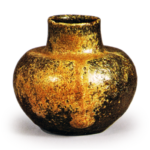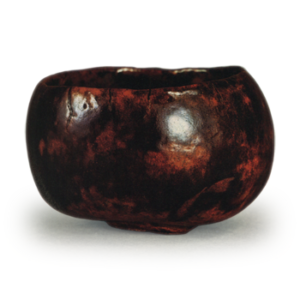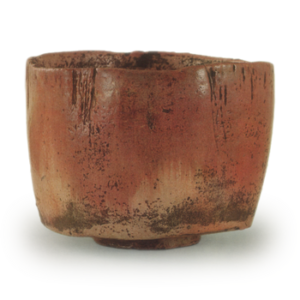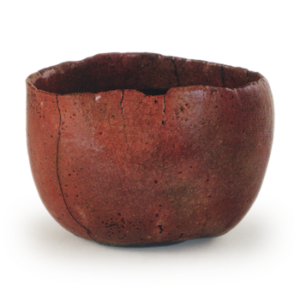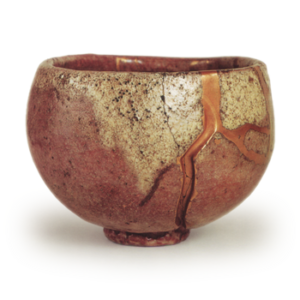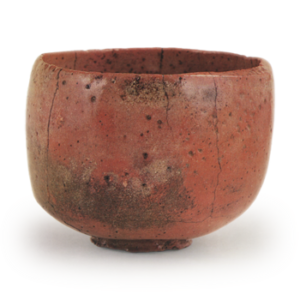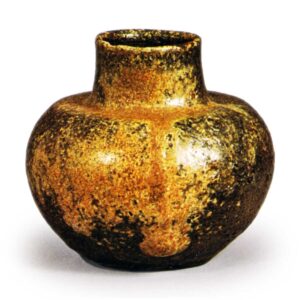
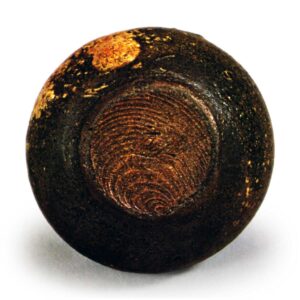
Height 5.9 cm, mouth diameter 2.7 cm, bottom diameter 3.3 cm
Of all the kilns that produced Jakucho pottery, Bizen ware was also the one that produced the greatest number of tea masters. Although not as varied or numerous as Seto tea masters, Bizen ceramics are quite well known for their excellent workmanship, such as kiln-formed pieces and Hidasuki (a kind of Hidasuki). Sekiji” and “Sui” are of almost the same style and have been regarded as Ibe-te since ancient times, but they are considered to have been produced in the Momoyama period, since the clay taste and the surface of the ware are more ancient than Ibe-te, which was mass-produced in the Edo period, and the Ibe-te style has been used since the late Muromachi period, and the style of Seto tea containers has changed over the years. The tea bowls are made in the style of Ibe-tei from the late Muromachi period.
The shape of the vessel is a faithful imitation of a karamono round jar tea jar, and its appearance is as neat as it appears. Bizen ware rarely has a thread bottom, but this type of tea caddy is an exception, with clear traces of thread cutting on the bottom of the tea caddy, which stands up low in the round seat style. The base of the tea caddy is painted with clay from the mouth to the base, and the sesame glaze is applied from the front neck to the body, with a thin layer on the back. An illegible kiln mark is engraved on the base. The origin of the inscription “Sui” is unclear, but it is thought to have been named after an old poem about the famous water of Sui, which is famous for its glaze color.
It was probably passed down to Hatajyoin (the physician to Toyotomi Hideji and Tokugawa Ieyasu), Hosokawa Echu-no-Mamoru, Matsudaira Norimitsu, Hotta Sagamimori, Otsu Motoki, and Matsudaira Fumai. Included in “Taisho Meikikan” (Taisho Meikikan).

